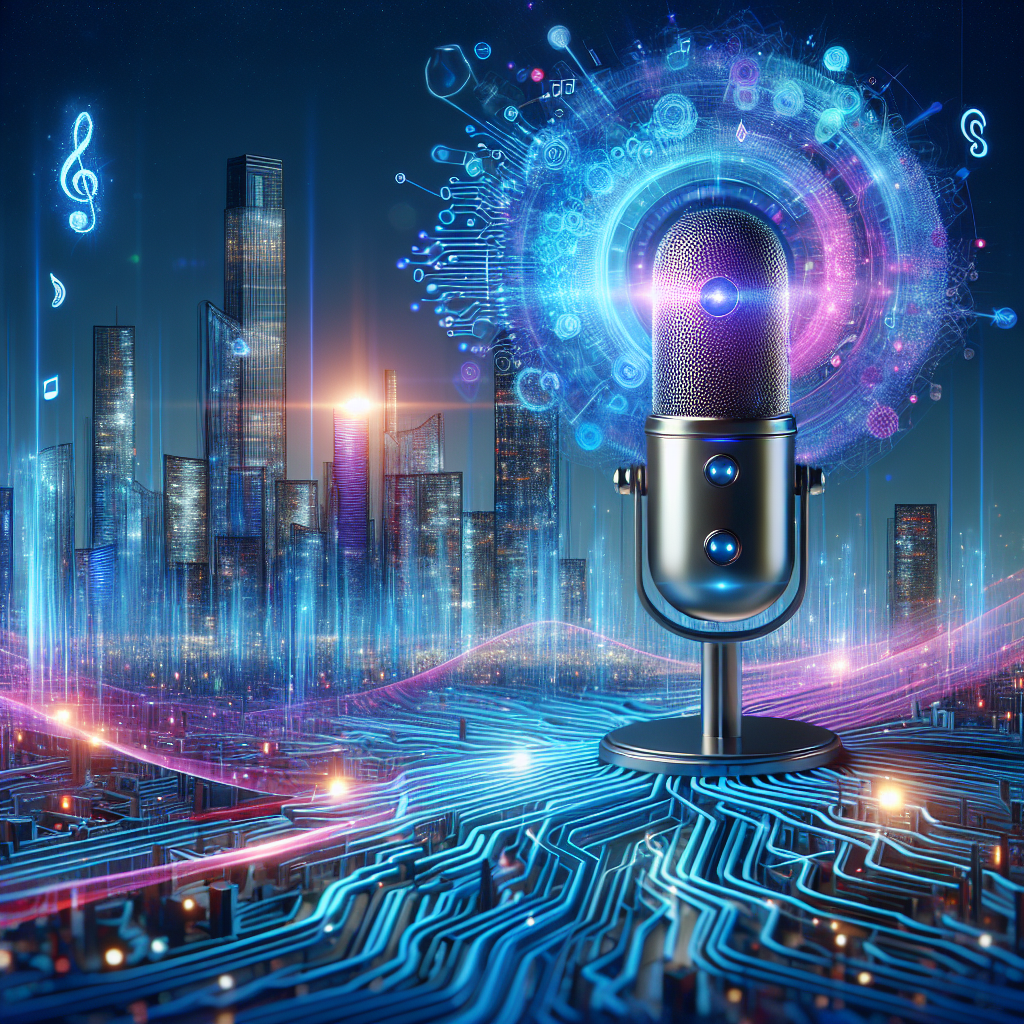The Dawn of Voice Engine and Grok 1.5: A Sonic Boom in AI Technologies
In the labyrinthine corridors of AI innovation, two prodigies have recently made their audacious entrance - Voice Engine and Grok 1.5. These newcomers aren't just passing through; they're here to revolutionize the way we interact with digital worlds and understand the canvas of auditory AI and machine learning. Let’s dive into an analysis, rich in zest and vibrance, exploring the unprecedented capabilities and potential impacts of these technologies.
Voice Engine: Speaking Volumes in AI's Language
First up on the roster is OpenAI's sneak peek into Voice Engine, an avant-garde model for creating custom voices that has the auditory world abuzz. With its debut, Voice Engine isn't just stepping onto the scene; it's making a leap that could redefine synthetic voice's role in education, accessibility, and beyond.
Bridging Gaps with Emotive Voices
Voice Engine's primary allure lies in its ability to provide reading assistance through natural-sounding, emotive voices. These aren't your run-of-the-mill, robotic utterances; we're talking about a wide spectrum of speakers that push the boundaries of what's possible with preset voices. This innovation heralds a new era for educational technology, exemplified by Age of Learning's partnership, which leverages this technology for real-time, personalized student interactions. The promise here is not just in the technology’s ability to emulate human speech but to do so with an emotional depth unprecedented in preset voice solutions.
But the ambition doesn't stop there. With examples showcasing the technology's prowess in reading assistance, the potential applications stretch into therapeutic uses for individuals with conditions affecting speech and providing educational enhancements for those with learning disabilities. Voice Engine is poised to be a cornerstone technology for a more inclusive digital world.
A Symphony of Languages
One of the most impressive feats of Voice Engine is its multilingual capabilities, allowing for seamless translation across languages. Partnering with Haen, which specializes in cloning voices and faces with eerie realism, Voice Engine can translate a speaker's voice into multiple languages, expanding the reach of content creators globally. This facet of Voice Engine not only showcases the technology's versatility but also underscores the potential for AI to foster a more connected and understanding world.
Grok 1.5: The Intellectual Titan
On the other side of the innovation spectrum, we have Grok 1.5, a brainchild of Elon Musk's XAI team. Positioned as a successor to Grok 1.0, Grok 1.5 boasts improved reasoning capabilities and a knack for math that would make even Pythagoras do a double-take. This model is not just another iteration; it's a quantum leap in understanding our natural world through the unbiased, computational lens of AI.
Benchmarking Brilliance
Grok 1.5's introduction to the world comes with some bold claims, substantiated by its performance in various benchmarks. Its capabilities in coding and math-related tasks have seen a significant uptick, with a 50% improvement in the math benchmark and a 90% score on gsm 8K Benchmark. But where Grok 1.5 truly shines is in its comparative analysis with its predecessors and contemporaries. Its performance edges out Claude 2 and rivets closely to Claude 3, emblematic of Grok 1.5's competitive edge and XAI's commitment to pushing the boundaries of AI's intellectual prowess.
The Future Unleashed
What truly sets Grok 1.5 apart is its ability to reason and solve problems in a context length of 128,000 tokens, a standard that would have been unthinkable not too long ago. This capability suggests that Grok 1.5 isn't just a tool for today's challenges but a foundation for tomorrow's innovations. The technology's potential applications range from scientific discovery and advanced problem-solving to enhancing educational platforms with nuanced, AI-driven insights.
Charting the Path Forward
As we stand at the precipice of these technological marvels, it's essential to recognize the journey ahead. The release of Voice Engine and Grok 1.5 into the wild is tempered by a cautious approach to deployment, particularly for Voice Engine, due to potential safety concerns and the implications for voice-based authentication systems. This cautious optimism reflects a broader understanding within the AI community about the need for responsible innovation and the importance of safeguarding against misuse.
Link to more information on AI ethical considerations
Closing Thoughts
The introduction of Voice Engine and Grok 1.5 into the AI landscape isn't just a milestone; it's a declaration of the possibilities that await us in the realm of AI and machine learning. These technologies herald a future where the lines between human and machine blur, not in a dystopian sense, but in a way that amplifies our capabilities, connects us across linguistic and physical divides, and opens new avenues for exploration and understanding.
As we peer into the horizon, it's clear: the future is not just knocking; it's speaking in a voice that resonates with the depth of human emotion and thinking with the clarity of unbiased intellect. Let's embrace it with open arms and open minds.
Link to more information on AI advancements
Related News
- Exploring the Frontiers of AI Voice Synthesis: A Deep Dive into 11 Labs' Newest Innovation
- Behind the Sonic Boom: An In-depth Exploration of AI's Latest Marvels
- The Rapid Evolution of AI: Bridging the Gap Between Dreams and Reality
- OpenAI's Open Voice: A Morsel of Vocal Alchemy for the Masses
- OpenAI's Advanced GPT-4 Voice Mode: A Game-Changer in AI Interaction
